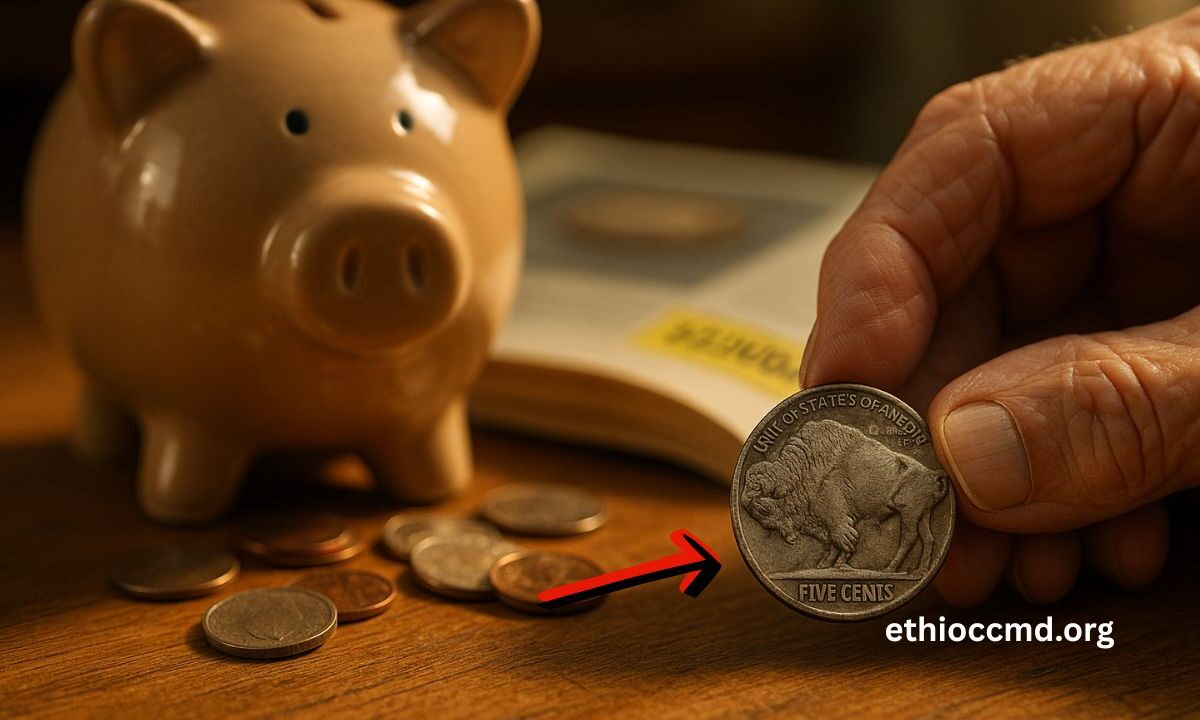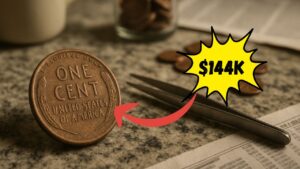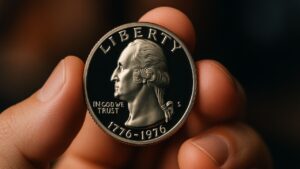Imagine discovering a rare Buffalo nickel in your piggy bank after 30 years—and learning it’s worth over $2 million. That’s exactly what happened recently in Ohio, where a 1937-D “three‑legged” Buffalo nickel, tucked away since childhood, stunned the collectibles world.
Discovery & Background
In a small Ohio town, a retired schoolteacher unearthed a 1937 Buffalo nickel that had spent more than three decades inside a child’s piggy bank. When auctioned, it commanded $2.1 million, turning a five-cent piece into a fortune overnight .
This coin belonged to the famous Buffalo nickel series minted from 1913 to 1938, designed by James Earle Fraser. The obverse features a composite Native American portrait; the reverse shows an American bison .
What Made This Nickel So Valuable
- Minting error type: This coin is the rare 1937-D “three‑legged” variety—a famed mint error where one of the buffalo’s front legs appears missing due to die over-polishing .
- Condition: Despite decades in storage, it remained in remarkably preserved state, contributing to its multi-million dollar valuation.
- Collector demand: Three-legged nickels are among the most sought-after in numismatics; only about 10,000 are estimated to exist ﹘ most are worn or damaged .
Quick Facts Table
| Detail | Information |
|---|---|
| Coin type | Buffalo nickel (Indian Head nickel) |
| Year & mint | 1937‑D (Denver Mint) |
| Error variety | Three‑legged buffalo due to die over‑polish |
| Discovered in | Piggy bank in Ohio |
| Storage time | Approximately 30 years |
| Auction sale price | $2.1 million |
| Minting years series | 1913–1938 |
| Designer | James Earle Fraser |
| Mint composition | 75% copper, 25% nickel, 5 g weight |
Historical Context: Buffalo Nickel Series
- Minted from 1913 to 1938, the Buffalo nickel was created to celebrate American themes. Fraser’s designs feature a Native American on the front and a buffalo on the back.
- Known to wear down quickly in circulation, most Buffalo nickels today lack clear dates or sharp design details—making well-preserved examples exceptionally rare.
Other High‑Value Buffalo Nickels
This Ohio story isn’t the only instance of nostalgia turning into gold:
- A 1915 proof Buffalo nickel fetched over $240,000 at auction—one of only 1,050 produced in flawless condition with multicolor toning .
- A pristine 1920‑D Buffalo nickel, graded at MS‑67, sold for about $138,000; another at MS‑66 fetched $97,000+ .
- A 1916 doubled‑die error coin (with “1916/16” visible) sold for $28,200 in AU55 condition .
- The legendary 1918/7‑D overdate Buffalo nickel, in MS‑66, can reach $650,000 or more in top condition.
Why It Matters
This rare Buffalo nickel story highlights how everyday items—forgotten coins in piggy banks—can unexpectedly reveal hidden value.
It also demonstrates the numismatic importance of minting errors and exceptional condition in driving a coin’s worth into the millions.
A humble Buffalo nickel, tucked away for decades, became a collector’s jackpot—with a 1937-D three-legged example selling for $2.1 million.
Its rarity, excellent condition, and iconic error make it a standout in American coin collecting. The incident underscores the surprising treasures that might still be hiding in our change jars or childhood keepsakes.
FAQs
What made the 1937 Buffalo nickel so valuable?
It’s the rare “three‑legged” error variety from the Denver Mint, preserved well enough to fetch $2.1 million at auction.
Could my old Buffalo nickel be worth a lot?
Yes—rare varieties like doubled-die errors or overdate mint mistakes (e.g. 1916, 1918/7‑D types) can be extremely valuable if in high-grade condition.
Did most Buffalo nickels survive in good condition?
No—most circulated Buffalo nickels lost their date and fine detail over time. Coins with clear design, date, and minimal wear are very rare.




